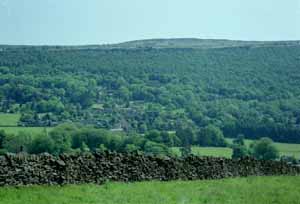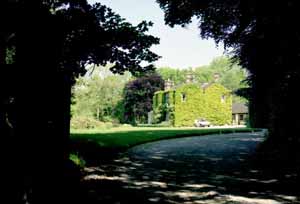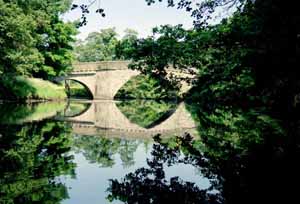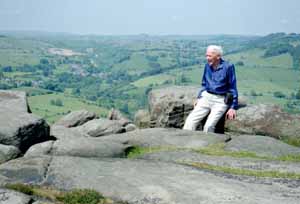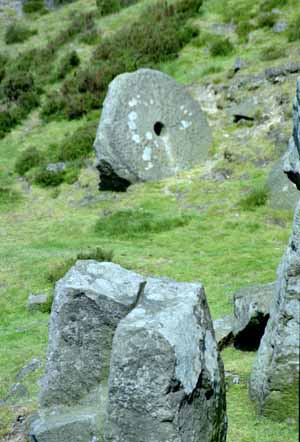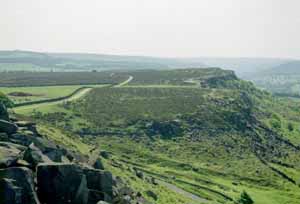Froggatt VillageFroggatt Village is a small knot of houses beside Froggatt Wood, nestled beside the Derwent River in the north-east of Derbyshire, a few miles southwest of Sheffield. It lies below the imposing skyline of Froggatt Edge. Froggatt is an ancient place, and the name dates back hundreds of years. A common, but completely wrong, explanation for the surname FROGGATT is along these lines:
More likely, the name derives from the Viking "gatta'" meaning road, and the location where the Derwent River was fordable close to a gap (e.g. the Curbar Gap) in the gritstone edges. The name is not listed in the Domesday Book. Early records show the name in the following forms:
It is probably from this village where the FROGGATT roots were established, that the name has spread world-wide. It is a name quite common in Derbyshire and Nottinghamshire, but realtively uncommon elsewhere. The small, isolated village of Eyam (the "Plague Village") lies across the valley from Froggatt and Froggatt Edge and you get a good view of how the gritstone "edges" dominate the skyline in the area. Froggatt is a small village now largely obscured by trees and the forest that is rapidly regenerating on the Edge.
Froggatt VillageFroggatt Village is a collection of houses built beside the Derwent River and accessed by a bridge across the Derwent. The bridge is notable for the different widths of the spans, the bridge having been altered and extended at some time in its life.
A while ago I was sent a newspaper clipping from a colleague who had just arrived at Sheffield University:
Chequers Inn at Froggatt EdgeAbove the village the A625 runs south from Sheffield and drops off the high Edge into the Derwent valley. Part way down is the old Chequers Inn. The Inn is a wonderful old building, well maintained and with rooms, food and beer of high standard. We thoroughly enjoyed our stay at the Chequers Inn and recommend it to any traveller.
Froggatt WoodFroggatt village today is surrounded by forest, managed by the National Trust. Much of this forest was farmland gifted to the NT and has reverted to forest.
Froggatt EdgeFroggatt Edge is accessible North and South by short walks from the road. We drove through Curbar and up to the Curbar Gap where there is a small carpark and wide track south right to the edge of the sandstone bluff. From here you get extensive views across the Derwent Valley. There are the remnants of numerous quarries in the sandstone and partly formed mill stones. In earlier times, most of the men in the nearby villages must have worked in these quarries, as the 1861 census lists their occupations as stonemason or similar.
A stroll along Froggatt EdgeAbove the village of Froggatt, the skyline is dominated by the sharp outline of the gritstone cliffs of Curbar and Froggatt Edges. You can park your car in the park at Curbar Gap then walk north onto Froggatt Edge or South onto Curbar Edge. Either way you get magnificent views of the Derwent Valley.
After retracing your path back to Curbar Gap, you can head south along Curbar Edge to Wellington Monument - a fitting place as I live in Wellington, New Zealand.
Last updated: 08/08/2019 |
